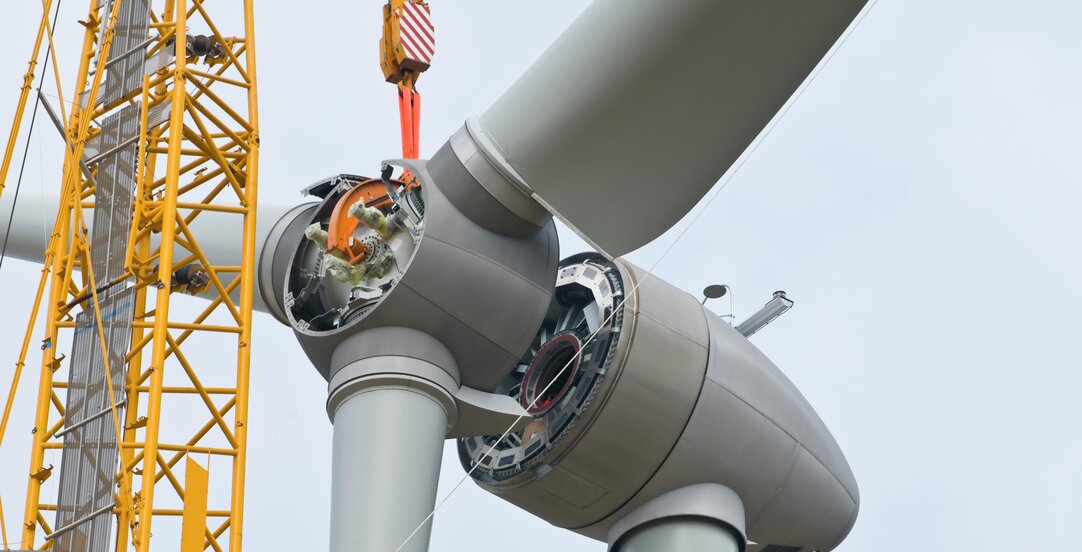Floating offshore wind: How to structure technology development

Technology development within offshore wind, particularly floating offshore wind, is expected to continue at a significant pace in the coming years. How could such technology development be structured, and what should the involved parties be aware of and take into consideration?
Reading time 4 minutes
The announcement of offshore wind licences in the Utsira Nord area, where conditions are suitable for floating offshore wind, gives high hopes that the Norwegian offshore industry can take a leading role within this field both domestically and internationally. However, in order for floating offshore wind to be commercially viable on a large scale, further development of floating wind technology is necessary.
Due to the need for technology development, companies intending to apply for licences for floating offshore wind will likely need to either develop new technology and intellectual property rights by themselves, or together with third parties. Simply relying on existing technology might not be a viable alternative for those who intend to apply for licences.
Structuring technology development – an overview
Development of new technology and intellectual property rights may be structured in different ways. The best structure will depend on the particulars of each project, such as the resources and knowledge of the licence applicant(s), and whether they need to engage or cooperate with third parties. Most of the companies interested in applying for a licence will likely focus on operating the wind farms, and may not have the required expertise to design and develop the floating technology on their own.
In the following sections, we will focus on the situations where new technology and intellectual property rights are developed together with third parties. These types of projects are normally structured as non-incorporated development (or cooperation) projects. The involved parties usually enter into cooperation, consortium, or innovation agreements, which set out each party’s rights and obligations.
These agreements typically include clauses detailing each party’s contributions, a project schedule/plan, and detailed rules on intellectual property rights. In addition, such agreements often include rules on project governance, use of sub-suppliers, confidentiality, breach of contract, and/or limitation of liability clauses. If the project is receiving grants, conditions set by funding authorities also need to be taken into account.
Regulating intellectual property rights in technology development
Intellectual property clauses normally require the most attention when negotiating and drafting technology development agreements. In this respect, parties normally require protection for the intellectual property they bring into a project, commonly referred to as the ‘background intellectual property rights’ or ‘project background’. This is a core principle which everyone usually agrees upon.
The parties also need to agree on rules regarding ownership of any intellectual property which may be developed in the project, often referred to as the ‘foreground intellectual property rights’ or ‘project results’. Additionally, other aspects related to intellectual property rights may also be relevant and necessary to include; for example, a single party may wish to be entitled to keep certain intellectual property rights developed during a project.
The specific regulations on ownership of new intellectual property rights depend on the project and the parties involved. If all parties contribute with relevant background intellectual property rights, a starting is often models with joint ownership or sole ownership based on whose intellectual property rights the new rights are based on. Further, if contributions from one or more parties remain limited to financial contributions (or making available testing facilities and the like), a common starting point is to not grant them ownership rights.
The above only demonstrates starting points subject to tailoring for each project. A wide range of different contractual regulations may be sought, and the end result of negotiations between cooperating companies may deviate substantially from the above referenced principles. In certain projects, the parties may for example agree that a single party should own all new intellectual property rights, and subsequently commercialise the product. This could be combined with clauses requiring transfer of the intellectual property rights, or the granting of perpetual licences, if commercialisation is not achieved within a certain time period. Further, the parties who only contribute financially may require ownership rights, licences, royalty payments, a preferred customer status, or similar, in return for their contribution.
In order for floating offshore wind to be commercially viable on a large scale, the overall project costs have to be reduced. Allowing suppliers to develop and deliver new solutions to several companies, may be an important factor in order to obtain such cost reductions. Both the suppliers and offshore wind project owners will need to work together to ensure technology development, and the commercial viability of future projects. As outlined above, a wide range of different strategies may be used in order to achieve this.
